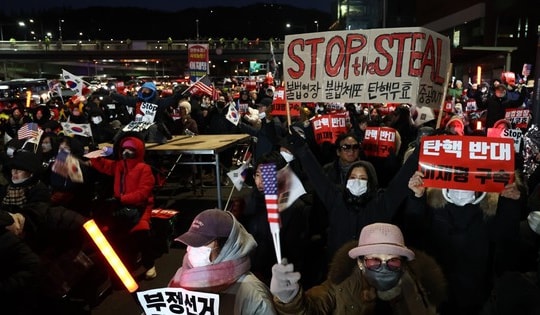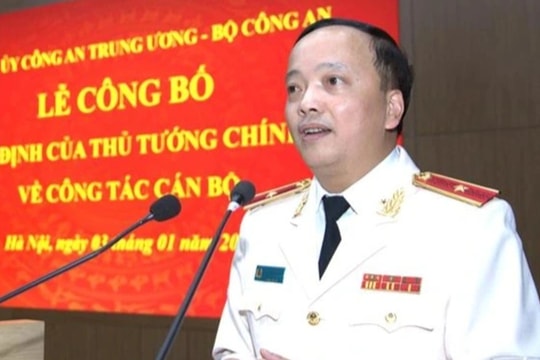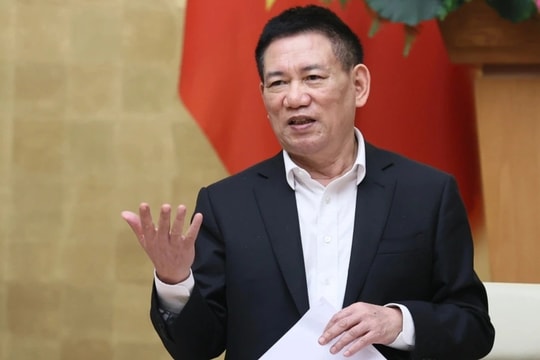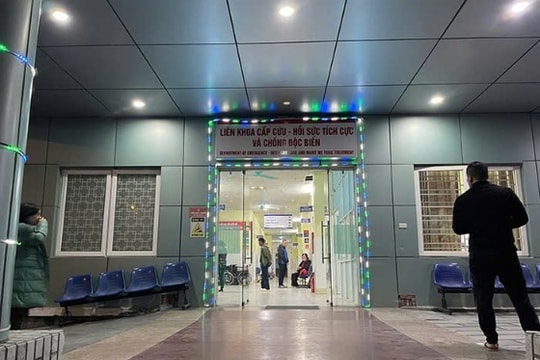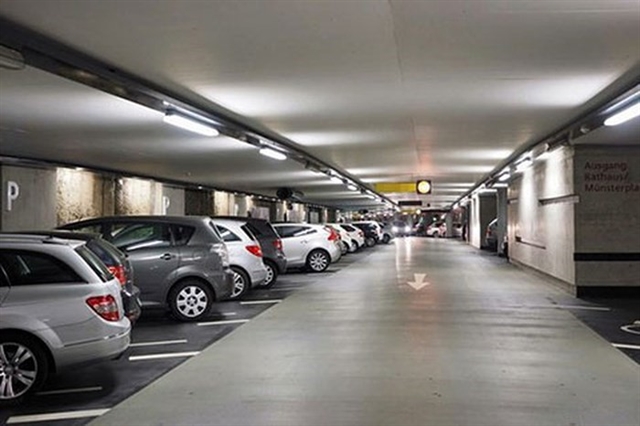 |
| Hà Nội lacks many underground car parking lots. Photo baophapluat.vn |
HÀ NỘI – The efficient exploitation and use of underground space play a particularly important role during the process of urban development and construction.
This need is even more urgent in the context of climate change, which is increasing the severity of natural disasters.
A prime example is the northern provinces of Việt Nam, including Hà Nội, which have recently experienced significant damage from Typhoon Yagi.
The typhoon swept through Hà Nội, causing extensive damage in various areas. In addition to tens of thousands of trees being broken or uprooted, many other losses related to citizens' assets and vehicles were reported.
Nguyễn Nhật Trường, a resident of the Định Công urban area in Hoàng Mai District, shares that during the storm, many vehicle owners parking under trees, lamp posts, or electric poles were very worried about their assets. Due to the height and mass of the trees, lamp posts, and electric poles, once they fall, the consequences could be severe.
Trường further explains that despite warnings on public media and local authorities frequently issuing warnings about the storm's dangers, organising information campaigns, and advising residents to move their vehicles to avoid storm damage, finding a safe parking spot in densely populated areas like Định Công, Linh Đàm in Hoàng Mai District, and other inner-city districts was not easy.
Even if they found a suitable parking space, these areas were often already full.
As a result, many families had no choice but to park along roadsides, where there were many trees.
Images of the storm's aftermath, shared on media outlets, showed many vehicles crushed by fallen trees.
Seeing these scenes of damaged vehicles, many could not help but feel heartbroken, especially knowing that for many families, their savings over a lifetime were tied up in those vehicles.
Discussing this issue, former head of the Infrastructure Department (Ministry of Construction), Assoc., Prof., Nguyễn Hồng Tiến told kinhtedothi.vn that one of the reasons for the damage to citizens' assets after each storm or flood was that Hà Nội and some other provinces had not yet developed underground spaces, including underground parking.
In Hà Nội, many urban areas and high-rise apartment complexes have been built without underground parking, according to Tiến.
In some areas with underground parking, it is often only suitable for motorbikes, such as in the Linh Đàm area.
Numerous apartment blocks have been constructed, but there are no underground parking spaces, or the parking is mostly on the ground level, while land designated for such spaces is scarce.
In densely populated inner-city districts, old apartment complexes built in the 1960s also lack underground space for parking.
As a result, residents are forced to make use of public parks, roadsides, and pavements, often near large trees, to park their vehicles, leaving them without a safe shelter during storms.
“A critical point is that, during the construction of apartment complexes and urban areas, the investment in underground space requires significant additional funding,” he said.
“So, many investors tend to overlook this aspect. Without underground parking, many buildings are forced to use ground-level spaces within public areas for parking,” he added.
For example, residents of the apartment complex at 183 Hoàng Văn Thái in Thanh Xuân District mostly have to use pavements, roadsides, and public spaces for parking.
Therefore, the slow development of underground spaces leads to consequences such as urban flooding, infrastructure overload, vehicles parking in public areas disrupting urban aesthetics, and causing traffic congestion.
Underground space issues
Speaking on the importance and role of underground space development, Tiến affirmed that the effective use and exploitation of underground space would bring many benefits.
Specifically, it would enhance the efficiency and quality of urban planning, reorganise urban construction space, increase land use value, and rationalise urban land resources for housing and public works.
It would also contribute to forming and developing the underground real estate market.
Moreover, underground space development would help address urban traffic issues, efficiently utilise land resources, and reduce environmental pollution impacts.
Most importantly, it would enhance safety and national security. Underground works could serve as a safe defence system in the event of natural disasters or war.
“Hà Nội is one of the leading localities in underground space development. The most visible example is the city's policy, since 2010, to underground electricity systems, communication networks, water supply, and drainage systems, as well as the development of tunnels such as the Kim Liên Tunnel, the Thăng Long Highway Tunnel, the Nguyễn Trãi Tunnel, and about 20 pedestrian tunnels,” Tiến said.
However, to meet the needs of a modern city, aiming to build a capital that is large in scale and competitive in the region and globally, Hà Nội needed to further accelerate underground space development, he said.
To realise this goal, based on Decision 1259/QĐ-TTg issued by the Government in 2011, Hà Nội had developed a master plan for underground urban space construction in the city's central areas that includes planning for subway lines, underground stations, underground structures, and underground parking lots.
In the upcoming Hà Nội Capital Planning for the 2021-2030 period, with a vision to 2050, and the adjustment project for the Hà Nội Master Plan to 2045, with a vision to 2065, Hà Nội would once again specify each position and location for underground space development.
However, along with focusing on underground space planning and organising the implementation of underground space projects, the city must pay particular attention to technical, technological, and financial management conditions, Tiến said.
According to urban development experts, surveying, constructing, and maintaining underground structures require high technology and advanced technical standards.
Underground constructions must meet strict technical criteria for durability, ventilation, and operational convenience, ensuring safety under all conditions, including natural disasters (earthquakes, floods) and fire or explosion disasters.
Thus, the city needs scientific research programmes and projects to transfer modern technologies that serve the construction and operation of underground works.
Efforts should focus on enhancing management capacity to operate underground structures efficiently, training a workforce capable of adopting modern technology, and building a database for urban underground spaces.
The city should also pursue digital transformation in managing this field. In terms of financial conditions, the city must acknowledge that initial investment in underground construction requires substantial capital, and thus, special investment mechanisms are necessary.
It is necessary to mobilise other resources for investment and construction of underground spaces.
“To accelerate underground space development, Hà Nội should consider using state budget funds as a major capital source to invest in some underground works and parking lots that would alleviate infrastructure overload in parking for densely populated areas, while also creating a ripple effect to attract private investors to the sector,” Tiến said. VNS



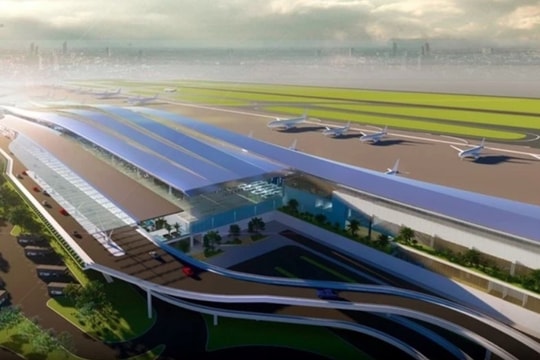


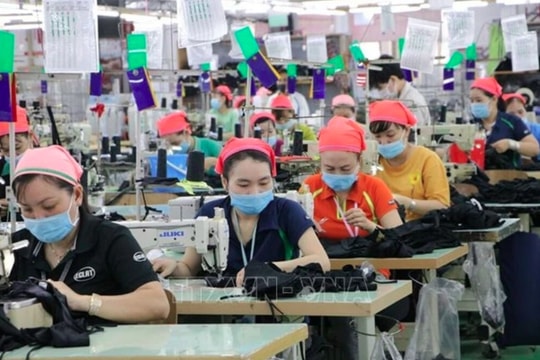
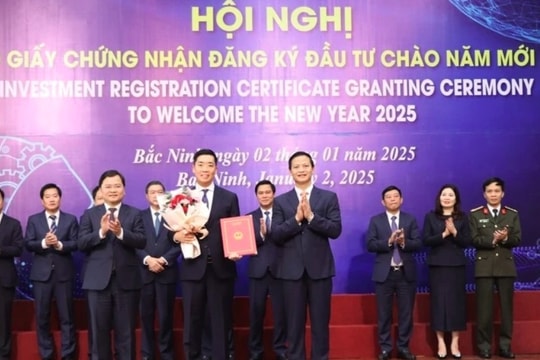



.jpg)
